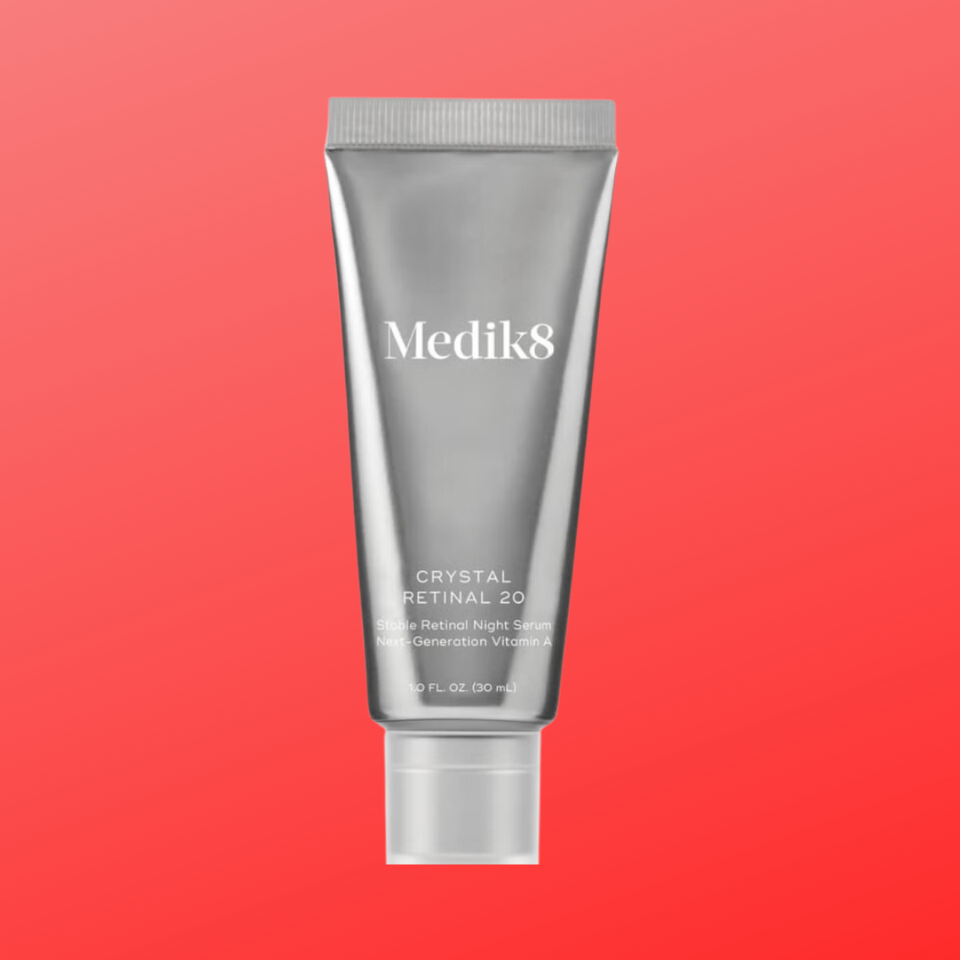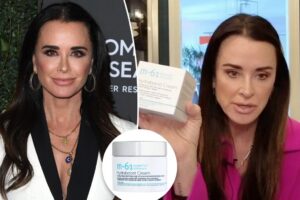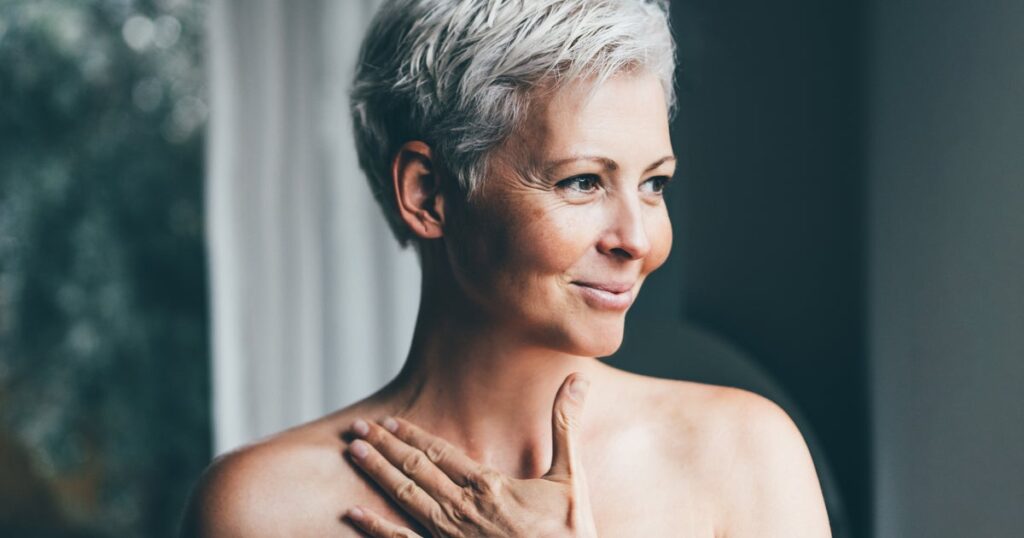Social media is a bit of a double-edged sword when it comes to skin care. On the one hand, anyone with a phone has access to expert dermatology advice right in their pocket. On the other hand, with so many skin care brands, influencers and content creators fighting for attention, it’s hard for the average person to determine which products and routines are actually beneficial and which ones are just fattening up someone else’s wallet by capitalizing on your FOMO.
And as Sephora babies show off their own “anti-aging” routines before their fifth-grade graduation, it’s no wonder that many in their 40s and 50s are looking around and asking themselves, “Did I miss the anti-aging boat?”
HuffPost spoke to four board-certified dermatologists about whether or not it’s “too late” to start an anti-aging regimen and how to start your own skin care routine to reap the most benefits possible.
Is it too late to start an anti-aging routine in your 40s or 50s?
It’s easy to feel dejected and even less motivated to start a new routine when you think it’s “too late.” But dermatology experts have some good news — your window of opportunity is now.
“You can start and maintain a good skin care regimen at any age. There’s no missing out, but there’s also no time like the present to start taking care of your skin,” said Dr. Susan Massick, an Ohio-based board-certified dermatologist and clinical associate professor of dermatology at Ohio State University.
And with the number of factors that influence how we each uniquely age, you actually might not be as far behind in the anti-aging department as you thought— even if you didn’t adopt a ten-plus-step skin care regimen before you could drive.
According to Massick, while biological aging is mostly determined by factors outside of your control, such as genetics and hormones, physiological aging can be modified by things within our control such as smoking, diet, sleep habits, stress management and most importantly, UV protection.
“If you’ve been diligent about sun protection from childhood through adulthood, your physiologic age is likely younger than your biologic age,” said Massick. “The opposite holds true — if you’ve been a lifelong tanner … you’ll look older than your biologic age.”
Even if you spent your 20s and 30s burning the candles at both ends, experts say hope is not lost. By adopting a solid skin care routine and partnering with a dermatologist to implement professional treatments like microneedling, chemical peels, fillers and laser resurfacing, you can address past damage and slow down further signs of aging.
“While you can’t fully restore your 20s, you can still achieve great-looking skin and do things to correct damage,” said Dr. Sabrina Alessi Cesar, a board-certified dermatologist and assistant professor of dermatology at Duke University.
How is your skin different in your 40s and 50s vs. your 20s and 30s:
Loss of elastin and collagen
“[Collagen and elastin] is what defines [our skin], whether it’s thick or thin, whether there’s resilience or what we call elasticity of our skin — when you stretch it, it snaps right back,” said Dr. Teo Soleymani, a California-based, double board-certified dermatologist and Mohs micrographic surgeon.
FreshSplash via Getty Images
As you age, not only do you begin to lose collagen and elastin in the dermis layer of your skin, but your body’s ability to produce collagen and elastin also decreases — manifesting as classic signs of aging.
“With this loss of collagen and elastic fibers, our skin becomes thinner, we start to develop fine lines — eventually evolving into deeper wrinkles. Over time, our skin is going to sag a little bit,” Casey said.
This is why it becomes even more important to protect your collagen from damage by regularly wearing SPF, particularly if you are approaching menopause.
“Women can lose close to 30% of their natural collagen in the first years of menopause,” Massick said.
Loss of fat
In addition to the collagen and elastin fibers that build the dermis layer of the skin, fat cells also play a key role in your skin’s foundation and youthful appearance.
“Our subcutaneous layer, which is our fat layer, gives us our volume or our fullness in our face and body,” Soleymani said.
While the baby-faced among us might hate their chubby cheeks in their youth, they may develop an appreciation for the extra buffer layer as the fat pads in our face naturally shrink with age.
“Fat pads sit underneath our skin and as well as our bone structure,” Casey said. “Think about the foundation of a house. As our fat pads start to shrink down, we’re losing that structural foundation that our skin rests on.”
As our fat pads shrink, our cheeks and eyes may look more hollow and sunken as we age, Casey explained.
Hyperpigmentation and discoloration
As our skin’s ability to repair damage decreases with age, you may notice more hyperpigmentation and discoloration. These pigment changes, caused by UV damage from the sun, occur in the deep basal layer of our epidermis, Casey explained.
“[In our 40s and 50s] we might start to see sun spots and freckles that don’t come and go like they did when we were kids, but they kind of stay,” Casey said.
These discolored spots also signal another challenge of older age: skin cancer.
“Skin cancer is a problem of adulthood. It’s not a problem of childhood,” said Soleymani. “As we age, with years and years in the sun, our body’s ability to constantly repair the damage weakens, and that’s how skin cancer happens.”
Increased dryness and sensitivity
“Physiologically … you are not only losing collagen, but you’re also no longer producing collagen and elastin as you age. Your skin loses its ability to repair itself and maintain its integrity, which can lead to dry skin that cracks and fissures,” said Massick, noting that this is why it’s essential to help replenish your skin barrier by using a good moisturizer as you get older.
Casey further explains that because hormones like estrogen and progesterone help keep the skin supple and hydrated for women, losing these hormones during menopause can also lead to increased dryness.
Here’s how to start an anti-aging routine in your 40s and 50s.
Going from a quick splash of water on your face in the morning to attempting a 10-step routine your niece swears by can feel overwhelming. But rest assured, your skin care routine doesn’t need to be complicated to be effective.
“Sometimes we feel we need a five-, six- or seven-step routine for skin care,” said Alessi Cesar. “We don’t need all that.”
As with any health-related routine, the best skin care routine is one you’ll be able to stick with long-term.
“Your skin care doesn’t have to be complicated, but it does need to be consistent,” Casey said. “Working with the dermatologist, getting the right skin care regimen, and then consistency is the name of the game.”
Your foundational skin care trifecta
With the sheer number of anti-aging serums, essences, ampoules, creams, lotions and potions on the market, you might think you’re going to have to stock up on the highest-potency products to wage war against time.
But the truth is, the skin care regimen of someone in their 40s or 50s generally won’t differ all too much from someone in their 20s or 30s.
“If you have healthy, normal skin, you don’t need much more than a moisturizer, a sunscreen and a cleanser,” said Alessi Cesar. “Everything else is fun.”
To remove makeup, dirt and other pollutants from your skin, Alessi Cesar recommends choosing gentle cleansers tailored to your skin type, such as dry, oily or sensitive.
As your skin becomes drier with age, Massick recommends looking for ingredients like ceramides and hyaluronic acid in moisturizers to help keep your skin hydrated.
Last, but most importantly, our experts recommend a daily sunscreen.
“The single most important thing that ages us prematurely, at least from an aesthetic standpoint, is too much sun exposure,” Soleymani said.
“If I was stuck on an island and I could only bring one product with me, sunscreen is going to be it,” Casey said. “Prevention is the best medicine, and sunscreen is going to do so much for shielding your collagen and elastic fibers [from damage].”
Massick adds that it’s not only important to use a sunscreen daily, but to also strictly follow safe sun guidelines, including:
- Reapplying sunscreen every 2-3 hours
- Using hats, sunglasses, and UPF protective clothing
- Avoiding peak midday sun exposure between 10 a.m. and 2 p.m.
Additional actives
Once you’ve established a skin care foundation — including cleanser, moisturizer, and sunscreen — you can start addressing more specific concerns, such as acne and pigmentation, Alessi Cesar said.
As your skin naturally loses collagen and elastin, incorporating a retinoid can be key in helping to slow down the signs of aging.
“[Retinoids] are the only ingredients that we have found in medicine that will actually regenerate new collagen,” Soleymani said.
In addition to helping reduce fine lines and wrinkles, Soleymani says retinoids can also help reduce dyspigmentation from sun damage by increasing cell turnover.
Unfortunately, as your skin becomes drier and sensitive due to hormonal changes, it’s possible your skin won’t be too happy with this notoriously irritating ingredient.
“Retinol can be a little bit trickier to tolerate when you are older,” said Alessi Cesar. If prescription-strength retinoids are too irritating for your skin, Alessi Cesar recommends trying an over-the-counter retinol, which can still provide the collagen-boosting benefits of retinol while being easier for the skin to tolerate.
Another worthy active to consider adding to your skincare routine is an antioxidant serum such as vitamin C. Casey notes that a vitamin C serum can help protect your skin against inflammation that can accelerate collagen and elastin breakdown.
As you delve further into the world of skin care, it’s easy to get a little too eager and add a whole haul of new products into your routine. But as the Navy SEALs say, “slow is smooth and smooth is fast.”
“You really have to listen to your skin. You have to be careful not to throw too much at it once,” said Casey, who recommends introducing one active ingredient at a time before adding another one.
“[In my office], we’ll start with their sunscreen and their retinol,” Casey said. “Then, maybe three months later, if they’re doing OK with that and they’re not seeing too much irritation, we’ll add in the vitamin C antioxidant serum.”
Looking for an over-the-counter retinol? These are the strongest ones you can find:
HuffPost and its publishing partners may receive a commission from some purchases made via links on this page. Every item is independently curated by the HuffPost Shopping team. Prices and availability are subject to change.

Dermstore
Medik8 Crystal Retinal 20 (0.2% retinal)
This cream is the highest run on Medik8’s Crystal Retinal ladder, boasting 0.2% retinal (if you’re wondering about the difference between retinol and retinal, read this). It’s for the most advanced skin care lovers and has double the concentration of the previous highest strength. It’s as good as it gets.

Dermstore
SkinCeuticals Retinol 1.0 maximum strength refining night cream (1.0% retinol)
In previous HuffPost reporting, Dr. Deanne Mraz, a board-certified dermatologist at Modern Dermatology in Connecticut and an assistant clinical professor of dermatology at Yale School of Medicine, thinks the varying retinol strengths available make this cream a great option for “anyone who needs to downshift to a gentler strength in the cold, dry winter months and turn up the volume [spring through fall].”

Skin Better Science
SkinBetter Science AlphaRet overnight cream (1.0% retinol)

Sephora
Youth To The People Retinal + Niacinamide Youth Serum (0.15% retinal)
This highly-rated and oft-reviewed serum utilizes retinal, niacinamide and ceramides to not only improve the look and feel of skin texture and and common signs of aging, but also reinforce the skin’s barrier, smooth skin, even tone and moisturize. It’s a powerhouse combo in the form of a lightweight serum that won’t feel heavy. It contains .15% retinal, significantly more than most traditional retinol-based products on the market.

Amazon
A313 cream (0.12% retinol)
Amazon reviewer Jessica said she “ordered this after hearing about it from an aesthetician. It has a vaseline-type texture when it goes on. So a little goes a long way. You can definitely feel it tingling after you put it on. It works, but I personally cannot use it more than 2-3 times per week or my skin gets irritated. When I use it regularly, my hyperpigmentation is much better and so are my fine lines and wrinkles. It is definitely worth a try, but if you have sensitive skin, I recommend you start with a small amount and only once or twice a week at most!”

Dermstore
La Roche-Posay Effaclar Adapalene Gel 0.1% Retinoid Acne Treatment (0.1% retinol)
This popular and affordable La Roche-Posay treatment is made with adapalene, a prescription-strength retinoid that is primarily used to treat acne, but also has all the other benefits of a traditional retinol. It’s incredibly effective and one of only two FDA-approved prescription-strength retinoid acne treatments, along with Differin, that can be purchased over the counter. I used adapalene for years before switching to retinol and tretinoin and found it to be incredibly effective.

Dermstore
Avène Retrinal 0.1 Intensive cream (0.1% retinaldehyde)

Target
Differin adapalene gel 0.1% acne treatment (0.1% adapalene)

Amazon
Naturium Retinaldehyde cream serum (0.1% retinal)

Dermstore
Allies of Skin Retinal & Peptides Repair night cream (.05% retinaldehyde)
This cream harnesses the power of retinal in combination with peptides, antioxidants and botanicals to nourish the skin while deeply infusing it with all the benefits of powerful, high-quality retinal. It’s uniquely balanced to be as effective as possible while also being gentle on the skin, making it a great option for those with sensitive skin who want to dip their toes into the strong retinol waters.
Read the full article here








